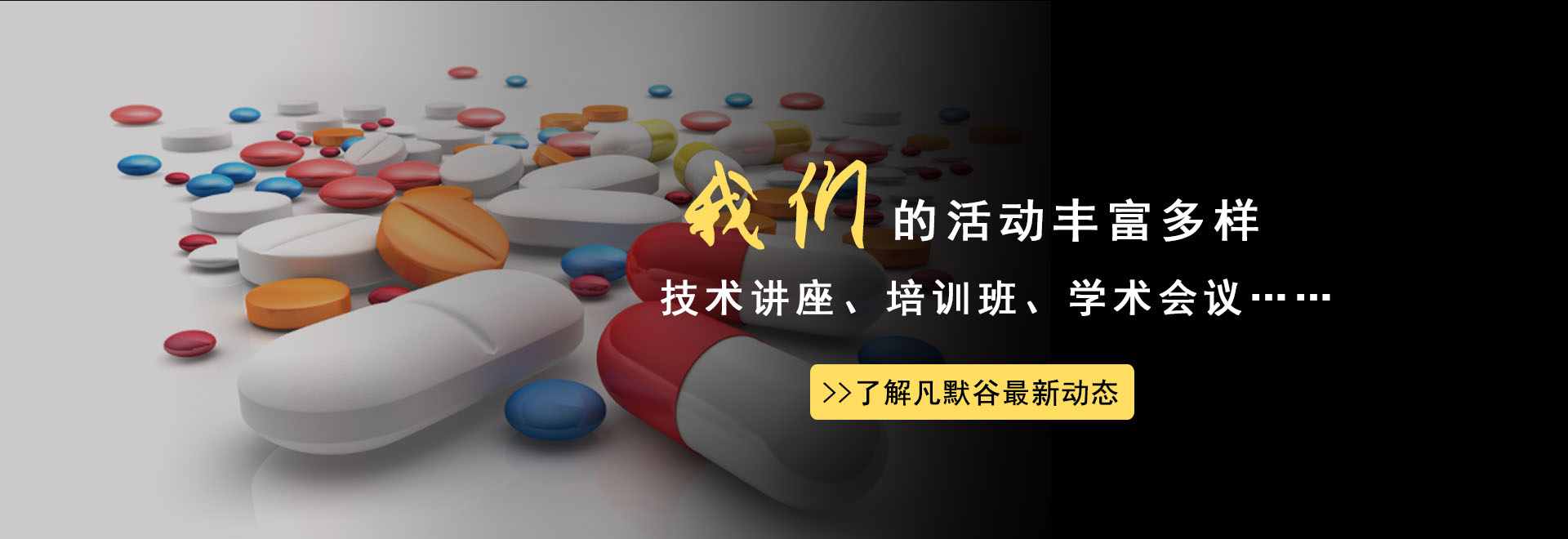GastroPlus 在PBPK、ACAT、PBBM 模型应用的综述文章(2011-2020)
导 读
凡默谷技术部精取了2011-2020年10月GastroPlus在PBPK、ACAT、PBBM模型应用的综述文章55篇。
其中序号1-20的文章是2019年8月-2020年10月新增文章。
希望对您的业务或专业学习有所帮助。内容如下:
Riedmaier AE, DeMent K, Huckle J, Bransford P, Stillhart C, Lloyd R, Alluri R, Basu S, Chen Y, Dhamankar V, Dodd S, Kulkarni P, Olivares-Morales A, Peng CC, Pepin X, Ren X, Tran T, Tistaert C, Heimbach T, Kesisoglou F, Wagner C, Parrott N. AAPS J. Article number: 123(2020). IF= 3.737
2.具有生物预测性的体外方法:研讨会总结报告
Pepin XJ, Dressman J, Parrott N, Delvadia P, Mitra A, Zhang X, Kolhatkar V, Seo P, Taylor LS, Sjögren E, Butler JM, Kostewicz ES, Tannergren C, Koziolek M, Kesisoglou F, Dallmann A, Zhao Y, Suarez-Sharp S. J Pharm Sci. September 2020.IF= 2.997
3. 使用基于生理的生物药剂学模型(PBBM)预测速释制剂空腹和餐后的生物等效性
4. 药物开发过程中,当前食物效应预测方法的综述
A Review of Current Methods for Food Effect Prediction During Drug Development
5. 生理药代动力学PBPK 模型在儿科领域:开始走向成熟?
Physiologically-based pharmacokinetic models for children: Starting to reach maturation?
6. 食物对药物口服吸收的影响:生理药代动力学PBPK 模型作为预测工具的应用
Food Effects on Oral Drug Absorption: Application of Physiologically-Based Pharmacokinetic Modeling as a Predictive Tool.
7. 通过体外溶出曲线相似性支持药品的质量评估:内容,如何应用,何时应用—研讨会总结报告
In Vitro Dissolution Profiles Similarity Assessment in Support of Drug Product Quality: What, How, When—Workshop Summary Report.
8.结构和PK 功能的类似物在开发和评估生理药代动力学PBPK 模型中的应用
Application of structural and functional pharmacokinetic analogs for physiologically based pharmacokinetic model development and evaluation.
9. 用于支持药品开发,生产变更与控制的转化建模策略的现状和未来期望:研讨会总结报告
Current State and Future Expectations of Translational Modeling Strategies to Support Drug Product Development, Manufacturing Changes and Controls: A Workshop Summary Report.
10.提高人体内PK 预测的准确性:从阿斯利康20 年药物研发管线里学到的经验
Improving the Accuracy of Predicted Human Pharmacokinetics: Lessons Learned from theAstraZeneca Drug Pipeline Over Two Decades.
11.针对口服给药的建模转化策略:学术,工业和监管的观点
Translational Modeling Strategies for Orally Administered Drug Products: Academic,Industrial and Regulatory Perspectives
Sandra Suarez-Sharp, Anders Lindahl, Tycho Heimbach, Amin Rostami-Hodjegan, Michael B. Bolger, Siladitya Ray Chaudhuri, Bart Hens. Pharm Res. 2020 May 13;37(6):95. IF=3.242
12.体内外相关性IVIVC在药物口服制剂开发中的应用:最近二十年缩影
Marcelo Gomes Davanço, Daniel Rossi Campos, Patrícia de Oliveira Carvalho.International Journal of Pharmaceutics. Volume 580, 30 April 2020, 119210.IF=4.845
13.采用生理药代动力学模型,考察肠道CYP3A 弱调节剂对药物相互作用风险的关键影响
Yamada M, Inoue SI, Sugiyama D, Nishiya Y, Ishizuka T, Watanabe A, Watanabe K, Yamashita S, Watanabe N. Drug Metab Dispos. 48:288–296, April 2020. IF=3.231
14.用于首次人体临床研究的固体制剂的工业开发方法:预测科学和精益原理的应用
An industrial approach towards solid dosage development for first-in-human studies: Application of predictive science and lean principles.
Kalaria DR, Parker K, Reynolds GK, Laru J. Drug Discovery Today. Volume 25, Issue 3, March 2020, Pages 505-518. IF=7.321
15.开发具有临床相关性的口服药品溶出标准-制药企业和法规监管的观点
Developing Clinically Relevant Dissolution Specifications for Oral Drug Products-Industrial and Regulatory Perspectives.
McAllister M, Flanagan T, Boon K, Pepin X, Tistaert C, Jamei M, Abend A, Kotzagiorgis E, Mackie CE. Pharmaceutics. 2019 Dec 23;12(1):19. IF=4.421
16.用结构多样且溶解度低的药物评估口服吸收模拟软件的预测特征
Prediction characteristics of oral absorption simulation software evaluated using structurallydiverse low solubility drugs.
T, Sugano K. J Pharm Sci. Volume 109, Issue 3, March 2020, Pages 1403-1416.IF=2.997
17.使用基于生理的生物药剂学PBBM 模型预测具有pH 依赖的碱性药物的药物相互作用DDI
Prediction of pH-Dependent Drug-Drug Interactions for Basic Drugs Using Physiologically Based Biopharmaceutics Modeling: Industry Case Studies.
Mitra A, Parrott N, Miller N, Lloyd R, Tistaert C, Heimbach T, Ji Y, Kesisoglou F. J Pharm Sci. Volume 109, Issue 3, March 2020, Pages 1380-1394. IF=2.997
18.考察无定型纳米颗粒对难溶性药物口服吸收影响的建模实用方法
Practical approach to modeling the impact of amorphous drug nanoparticles on the oral absorption of poorly soluble drugs.
Stewart AM, Grass M. Mol. Pharmaceutics. 2020, 17, 180−189. IF=4.321
19.采用具有生物预测性的体外测试方法,评估过饱和剂型在肠道中的吸收
Biopredictive in vitro testing methods to assess intestinal drug absorption from supersaturating dosage forms.
Hens B, Kataoka M, Ueda K, Gao P, Tsume Y, Augustijns P, Kawakami K, Yamashita S. J Drug Deliv Sci Technol. Volume 56, Part B, April 2020, 101275. IF=2.734
20.食品成分的安全性评估:毒性动力学方法的实用性和相关性
Food ingredient safety evaluation: Utility and relevance of toxicokinetic methods.
Volume 382, 1 November 2019, 114759. IF=3.347
21. 使用药物代谢酶和转运体的蛋白丰度数据库,进行生理药代动力学PBPK 的建模和模拟
A repository of protein abundance data of drug metabolizing enzymes and transporters for applications in physiologically based pharmacokinetic (PBPK) modelling and simulation.
Ladumor MK, Thakur A, Sharma SS, Rachapally A, Mishra S, Bobe P, Rao VK, Pammi P, Levi D, Balhara A, Ghandikota S, Joshi A, Nautiyal V, Prasad B, Singh S.Scientific Reports. 2019 July. IF=3.998
22. 建立可信度高的生理药代动力学PBPK 模型的要求及克服相应的一些挑战
Requirements to Establishing Confidence in Physiologically Based Pharmacokinetic (PBPK) Models and Overcoming Some of the Challenges to Meeting Them.
Peters SA, Dolgos H. Clin Pharmacokinet. 25 June 2019. IF=4.604
23. “固定剂量复方药品的开发”研讨会报告:考虑胃肠生理学的影响和整体发展战略
“Development of Fixed Dose Combination Products” Workshop Report: Considerations of Gastrointestinal Physiology and Overall Development Strategy.
Hens B, Corsetti M, Bermejo M, Löbenberg R, González PM, Mitra A, Desai D, Chilukuri DM, Aceituno A. AAPS J. Jun 6, 2019. IF= 3.737
24. 生物药剂学分类系统BCS 和基于药物体内处置的生物药剂学分类系统BDDCS:超出指导原则的情况
The Biopharmaceutics Classification System (BCS) and the Biopharmaceutics Drug Disposition Classification System (BDDCS): Beyond guidelines.
Charalabidis A, Sfouni M, Bergstrom CAS, Macheras P. Int J Pharm. May 17, 2019.IF=4.845
25. 基于生理药代动力学PBPK 模型预测首次人体PK 的新策略及几个有挑战性的工业界案例
Physiologically Based Pharmacokinetic Modelling for First-In-Human Predictions: An Updated Model Building Strategy Illustrated with Challenging Industry Case Studies.
Miller NA, Reddy MB, Heikkinen AT, Lukacova V, Parrott N. Clin Pharmacokinet.Feb 7, 2019. IF=4.604
26. 化妆品安全评估中毒理学关注内部阈值(iTTC)面临的挑战:化妆品欧洲iTTC 研讨会的相关讨论要点
Ellison CA, Blackburn KL, Carmichael PL, Clewell HJ 3rd, Cronin MTD, Desprez B, Escher SE, Ferguson SS, Gregoire SL, Hewitt NJ, Hollnagel HM, Klaric M, Patel A, Salhi S, Schepk A, Schmitt BG, Wambaugh JF, Worth A. Regul Toxicol Pharmacol.Jan 28, 2019.IF=2.652
27. 生理化合物动力学模型在解决环境化学混合物中的作用:综述
Role of Physiologically Based Kinetic modelling in addressing environmental chemical mixtures – a review.
Desalegn A, Bopp S, Asturiol D, Lamon L, Worth A, Paini A. Computational Toxicology. Oct 1, 2018. CiteScore=2.5
28. 使用生物相关溶出方法和PBPK 建模来预测口服药物吸收
Use of Biorelevant Dissolution and PBPK Modeling to Predict Oral Drug Absorption.
Kaur N, Narang AS, Kumar Bansal A. Eur J Pharm Biopharm. 2018 Aug; 129:222-246. IF=4.604
29. 生理药代动力学PBPK 模型在固体药物纳米颗粒转化中的新兴作用
The emerging role of physiologically based pharmacokinetic modelling in solid drug nanoparticle translation.
Siccardi M, Rannard S, Owen A. Adv Drug Deliv Rev. 2018 Jun;131:116-121.IF=13.3
30. 生理药代动力学PBPK 模型在肿瘤药物开发中的应用及其准确性:系统性的综述
Utility of physiologically based pharmacokinetic (PBPK) modeling in oncology drug development and its accuracy: a systematic review.
Saeheng T, Na-Bangchang K, Karbwang J. Eur J Clin Pharmacol. 2018 Nov;74(11):1365-1376. IF=2.641
31. 在评估儿科口服药品中生物药剂学的考虑因素-PEARRL 综述
Biopharmaceutical considerations in paediatrics with a view to the evaluation of orally administered drug products – a PEARRL review.
Guimarães M, Statelova M, Holm R, Reppas C, Symilllides M, Vertzoni M, Fotaki N.J Pharm Pharmacol. 2018 Jul 3. IF=2.571
32. 在儿科药物开发中使用生理药代动力学PBPK 模型的最新研究进展
State-of-the-Art Review on Physiologically Based Pharmacokinetic Modeling in Pediatric Drug Development.
Yellepeddi V, Rower J, Liu X, Kumar S, Rashid J, Sherwin CMT. Clinical Pharmacokinetics. 2018 May 18; pp 1–13. IF=4.604
33. 用于高通量筛选中优先顺序和决策的体外到体内转化IVIVE
In vitro to in vivo extrapolation for high throughput prioritization and decision making.
Bell SM, Chang X, Wambaugh JF, Allen DG, Bartels M,et,al. Toxicol In Vitro. 2018 Mar; 47:213-227. IF=2.959
34. 在提交给法规的申请资料中,采用生理药代动力学PBPK 模型的资质和结果报告的流程:来自联盟的观点
Physiologically Based Pharmacokinetic Model Qualification and Reporting Procedures for Regulatory Submissions: A Consortium Perspective.
Mohamad Shebley, Punam Sandhu, Arian Emami Riedmaier, Masoud Jamei, Rangaraj Narayanan, Aarti Patel, et al. Clin Pharmacol Ther. 2018 Jul; 104(1): 88–110. IF=6.565
35. 使用PBPK 模型预测口服药物的吸收:微综述
Predicting Oral Drug Absorption: Mini Review on Physiologically-Based Pharmacokinetic Models.
Louis Lin, Harvey Wong. Pharmaceutics. 2017 Dec; 9(4): 41. IF=4.421
36. 通过生理药代动力学PBPK 模型对药物纳米颗粒进行建模
Li M, Zou P, Tyner K, et al. AAPS J. 2017: 1-17. IF= 3.737
37. IMI-口服药物生物药剂学方法项目-评价自下而上的PBPK 方法预测的成功率的第1 部分:对欧盟口服生物药剂学工具OrBiTo 化合物数据库的表征(测试)
IMI–oral biopharmaceutics tools project– evaluation of bottom-up PBPK prediction success part 1: Characterisation of the OrBiTo database of compounds.
Margolskee A, Darwich A S, Pepin X, et al. EUR J Pharm Sci, 2017, 96: 598-609.IF=3.616
38. IMI-口服药物生物药剂学方法项目-评价自下而上的PBPK 方法预测的成功率的第2 部分:模拟训练的介绍和结果的概述
Margolskee A, Darwich A S, Pepin X, et al. EUR J Pharm Sci, 2017, 96: 610-625.IF=3.616
39. IMI-口服药物生物药剂学方法项目-评价自下而上的PBPK 方法预测的成功率的第3 部分:通过对不同类别化合物的计算机预测In Silico 性能分析,鉴定系统参数中与目标的差距
Darwich A S, Margolskee A, Pepin X, et al. EUR J Pharm Sci, 2017, 96: 626-642.IF=3.616
40. 药物在胃肠道的行为和ADME 现象:II-计算机模拟
Gastrointestinal behavior and ADME phenomena: II. In silico simulation.
Lamberti G, Cascone S, Marra F, Titomanlio G, d’Amore M, Barba AA. (2016). J Drug Del. Sci. and Tech. 35:165, IF=2.734
41. 在制药行业和监管科学中使用生理相关的生物药剂学工具:当下的状况及存在的差距?
Use of physiologically relevant biopharmaceutics tools within the pharmaceutical industry and in regulatory sciences: Where are we now and what are the gaps?
Flanagan T, Van Peer A, Lindahl A. (2016) Eur J Pharm Sci. 91:84-90. IF=3.616
42. PBPK 建模与模拟在药物研究与开发中的应用
Zhuang X, Lu C. (2016). Acta Pharmaceutica Sinica B. June 23. IF=7.097
43. 生理药代动力学PBPK 建模和模拟的方法:对已公开的模型,应用和模型验证的系统性综述
Physiologically Based Pharmacokinetic (PBPK) Modeling and Simulation Approaches: A systematic review of published models, applications and model verification.
Sager JE, Yu J, Raguenau-Majlessi I, Isoherranen N. (2015). Drug Metab Dispos.Aug 21. IF=3.231
44. 药物在穿越体外和体内屏障时,渗透的定量方法
Quantitative aspects of drug permeation across in vitro and in vivo barriers.
Krämer SD. (2015) Eur J Pharm Sci. Oct 19. IF=3.616
45. 采用生理药代动力学PBPK 模型预测双环醇控释制剂在人体的PK
Application of physiologically based pharmacokinetic modeling in the prediction of pharmacokinetics of bicyclol controlled-release formulation in human.
Wang B, Liu Z, Li D, Yang S, Hu J, Chen H, Sheng L, Li Y. (2015). Eur J Pharm Sci.Jun 24. IF=3.616
46. 制药工业界关于口服制剂处方筛选的方法学
Methodology of oral formulation selection in the pharmaceutical industry.
Kuentz M, Holm R, Elder DP. (2015) Eur J Pharm Sci. Dec 11. IF=3.616
47. 在质量源于涉及范式下,使用吸收模型进行合理的药物设计
Kesisoglou F, Mitra A. (2015) AAPS J. May 22. IF= 3.737
48. 采用PBPK 模型预测口服剂型的体内性能
PBPK models for the prediction of in vivo performance of oral dosage forms.
Kostewicz ES, Aarons L, Bergstrand M, Bolger MB, Galetin A, Hatley O, Jamei M, Lloyd R,Pepin X, Rostami A, Sjögren E, Tannergren C, Turner DB, Wagner C, Weitschies W, Dressman J. (2013) Eur J Pharm Sci. Sep 21. IF=3.616
49. 使用计算机预测的参数预测药物的PK 曲线
Predicting Pharmacokinetic Profiles Using In Silico Derived Parameters.
Hosea NA, Jones HM. (2013). Mol Pharmaceut. Feb 21. IF=4.321
50. 采用建模的方法驱动口服药物的高效设计
The Use of Modeling Tools to Drive Efficient Oral Product Design.
Mathias NR, Crison J. (2012). AAPS J. May 30. IF= 3.737
51. 生理药代动力学PBPK 模型:方法论,应用和局限性,重点关注其在儿科药物开发中的作用
Khalil F, Läer S.(2011) J Biomed Biotechnol. 2011: 907461. IF=2.44
52. 药物开发阶段,采用基于生理学的吸收模型实施质量源于设计QbD
Zhang X, Lionberger RA, Davit BM, Yu LX. (2011) AAPS J. 13(1):59-71. IF= 3.737
53. 具有预测性的生物药剂学建模和模拟方法在药物开发和法规监管评估中的作用
Jiang W, Kim S, Zhang X, Lionberger RA, Davit BM, Conner DP, Yu LX. (2011) Int J Pharm. 418(2):151-60. IF=4.845
54. 生理药代动力学PBPK 建模与模拟在法规监管审评中的应用
Clin Pharmacol Ther. 89(2):259-67. IF=6.565
55. 辉瑞在药物发现和开发阶段使用PBPK 建模的简介
Application of PBPK modelling in drug discovery and development at Pfizer.
点击查看其他文献


